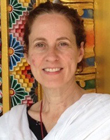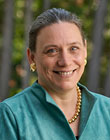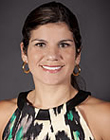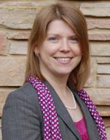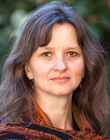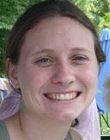American Academy of Religion Program Committee Meeting
Atlanta, Georgia • January 6–8, 2017
Program Committee Roster
2016 Annual Meeting Report
2017 Annual Meeting Program and Reviews
Other Business
Committee Deliberation of Program Unit Reviews
Proposals for New Program Units
Tools Used in the Program Committee's Evaluation Processes
Program Committee Roster
2016 Annual Meeting Report
2016 Post-Annual Meeting Survey Narrative
2016 Post-Annual Meeting Survey Results
2017 Annual Meeting Program and Reviews
Program Unit Chair Changes
Approving 2017 Call for Proposals
Brainstorming 2017 Reviewers and Assigning Lead Readers
Other Business
A. Consideration of Special Requests from Program Units
B. Merger of Latina/o Critical and Comparative Studies Unit and Religion in Latin American and the Caribbean Unit into Religions in the Latina/o Americas Unit – approved for 5 years; 3 sessions
C. Requiring AAR membership for Annual Meeting proposals – passed unanimously
D. Related Scholarly Organizations (RSOs) renewal applications and review procedures
Committee Deliberation of Program Unit Reviews
|
Program Unit
|
Decision
|
|
African Religions
|
5-year Renewal; 2 sessions
|
|
Animals and Religion
|
5-year Renewal; 2 sessions
|
|
Christian Spirituality
|
1-year Renewal with 2 sessions; External Review
|
|
Cognitive Science of Religion
|
5-year Renewal; 2 sessions
|
|
Comparative Religious Ethics
|
5-year Renewal; 2 sessions
|
|
Ethics
|
5-year Renewal; 4 sessions
|
|
History of Christianity
|
1-year Renewal with 4 sessions; External Review
|
|
Japanese Religions
|
5-year Renewal; 2 sessions
|
|
Latina/o Religion, Culture, and Society
|
5-year Renewal; 2 sessions
|
|
Native Traditions in the Americas
|
5-year Renewal; 2 sessions
|
|
Psychology, Culture, and Religion
|
1-year Renewal with 2 sessions; External Review
|
|
Qur’an
|
5-year Renewal; 2 sessions
|
|
Religion and Science Fiction
|
5-year Renewal; 1 session
|
|
Religion and the Social Sciences
|
5-year Renewal; 4 sessions
|
|
Religion in Europe
|
5-year Renewal; 1 session
|
|
Religion, Film, and Visual Culture
|
5-year Renewal; 2 sessions
|
|
Religion, Media, and Culture
|
5-year Renewal; 2 sessions
|
|
Religion, Sport, and Play
|
5-year Renewal; 1 session
|
|
Tantric Studies
|
5-year Renewal; 2 sessions
|
|
Teaching Religion
|
5-year Renewal; 5 sessions
|
|
Theology and Religious Reflection
|
5-year Renewal; 5 sessions
|
|
Tillich: Issues in Theology, Religion, and Culture
|
5-year Renewal; 1 session
|
|
Vatican II Studies
|
1-year Renewal with 1 session; External Review
|
|
Women of Color: Scholarship, Teaching, and Activism
|
5-year Renewal; 1 session
|
Proposals for New Program Units
|
Seminars
|
Decision
|
|
Navaratri
|
Approved for 5 years; 1 session
|
|
Origen and the Roots of “Human Freedom” and “Human Dignity” in the West
|
Approved for 5 years; 1 session
|
|
Political Theology
|
Approved for 5 years; 1 session
|
|
Race, Coloniality, and Philosophy of Religion
|
Declined
|
|
Religious Reflections on Friendship
|
Declined
|
|
Religion and National Security
|
Declined
|
|
Religion and Families in North America
|
Approved for 5 years; 1 session
|
|
Religion, Attire, and Adornment in North America
|
Approved for 5 years; 1 session
|
|
Transnational Religious Expression: Between Asia and North America
|
Approved for 5 years; 1 session
|
Tools Used in the Program Committee's Evaluation Processes
A. Program Unit’s Annual Reports
B. Program Unit’s Five-year Self Review
This document states the aims of the unit, its procedures, its programming accomplishments, and a rationale for the unit’s continued existence. Among the criteria deemed relevant to the self-review include:
-
The extent to which the field of interest represented by the unit continues to reflect a major area of interest and work for a significant portion of the Academy's membership; one possible metric by which this may be measured is the number and quality of proposals the unit receives.
-
The intellectual rigor, imagination, conceptual richness, and distinction of the work carried on by the unit, whether through the presentation of papers, the sponsorship of discussions, or the publication of proceedings.
-
The degree of commitment that the unit's constituency exhibits to the ongoing life of the unit; one possible metric by which this may be measured is the attendance at the unit’s Annual Meeting sessions.
-
The procedural health of the unit, including leadership practices, such as mechanisms for selecting new chairs and steering committee members; communication within the unit, between units, and with the AAR; and the unit’s proposal review process and other decision making practices.
-
The extent to which the unit's constituency has been afforded an opportunity to participate in the sessions (with attention to diversity of seniority, race, ethnicity, nationality, and gender among participants).
-
The unit's range of appeal to those members of the Academy whose own fields of specialization do not typically fall within the field of interest represented by the unit and the unit's ability to involve such people periodically in its programs; one possible metric by which this may be measured is the number of sessions which the unit cosponsors with other Program Units.
-
Over the course of the next five years, the promise the unit offers for advancing the academic study of religion, or the relation of that study to other disciplines.
C. External Reviewer Reports (if applicable)
If a Unit requests a change of status, additional sessions, requests an external review, or if the Program Committee, after its examination of the Program Unit’s metrics or Program Unit’s self-review, decides to follow-up with an external review, a reviewer will be selected by the Program Committee. Efforts are made to locate a member who has expertise in the field and who is able to play the role of participant-observer in the unit’s review.
The reviewer’s written report, is based on
-
attending as many sessions of the unit as possible during the Annual Meeting, including the unit’s business meeting(s);
-
personal interviews with the unit chairs, members of the steering committee and a cross-section of participants at Annual Meetings both current and previous (if that can be arranged); and
-
the unit’s written self-review.
D. Special consideration of creative sessions, strategies, experiments
E. Quantitative data collected in connection with the Annual Meeting
Some of this data is derived from the PAPERS System, but also from the Annual Reports (see graphs here for data on Proposals, Sessions, Attendance, Acceptances, Selectivity, Proposal Ratio, Cosponsorships, and Collaborativity).
